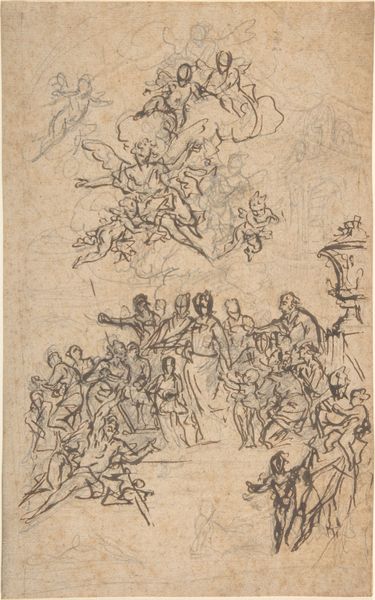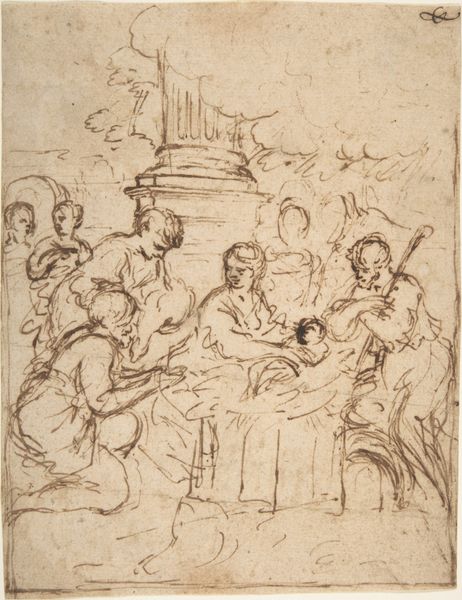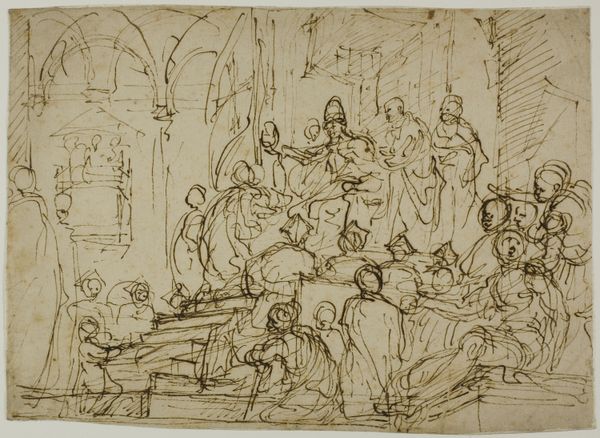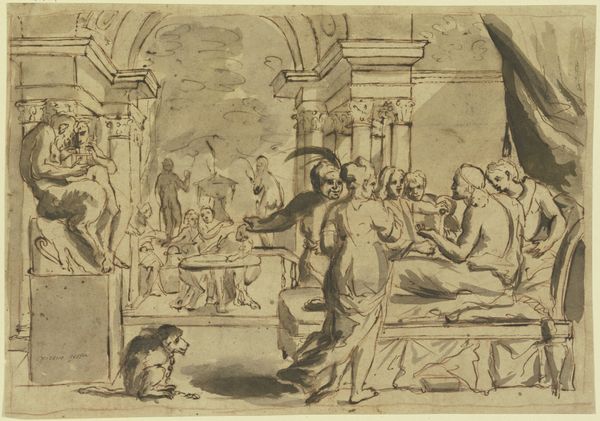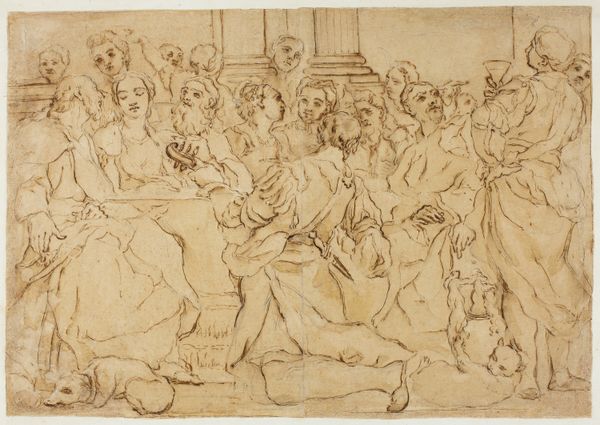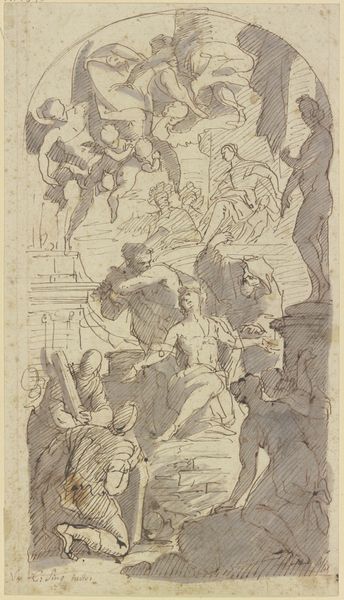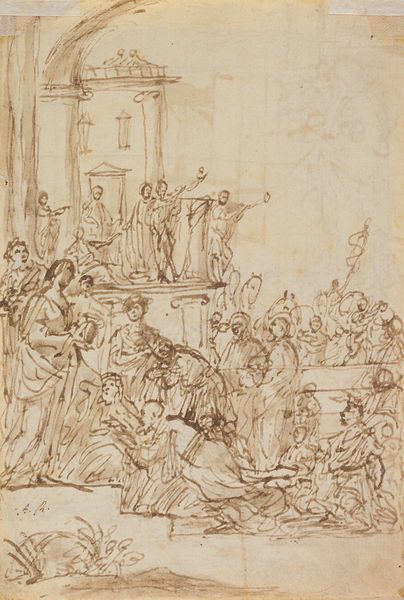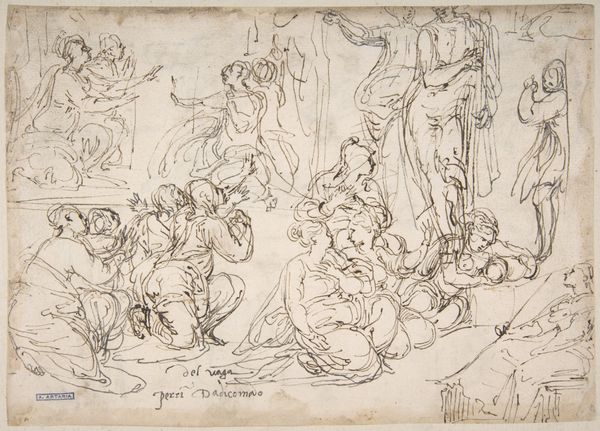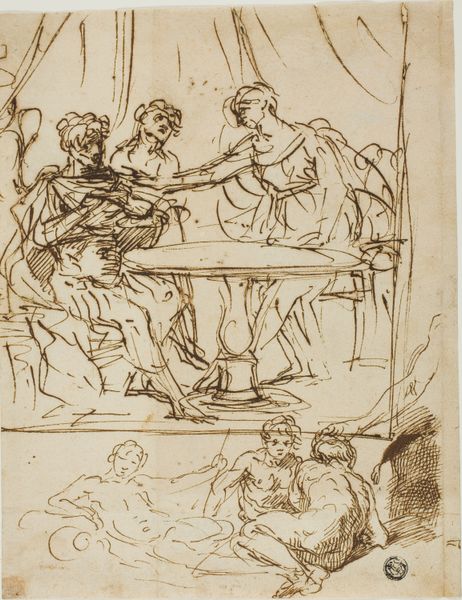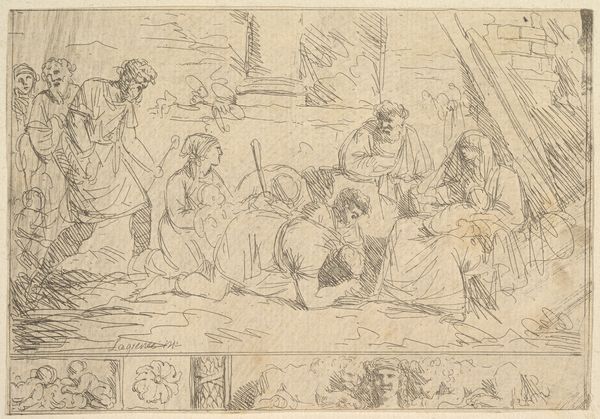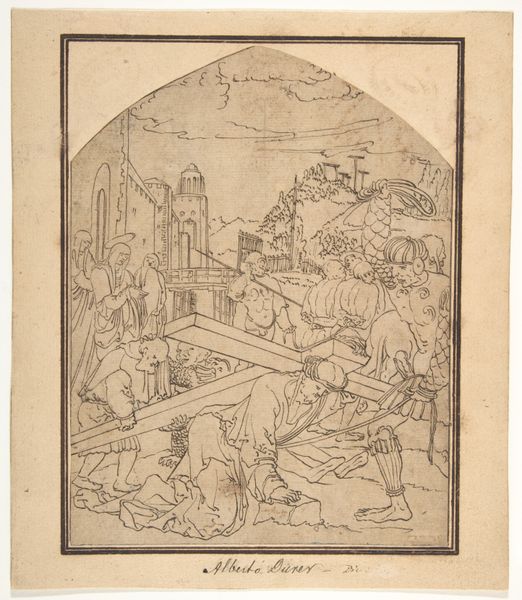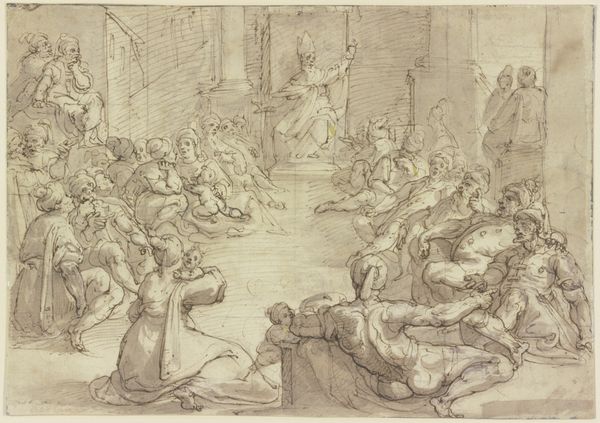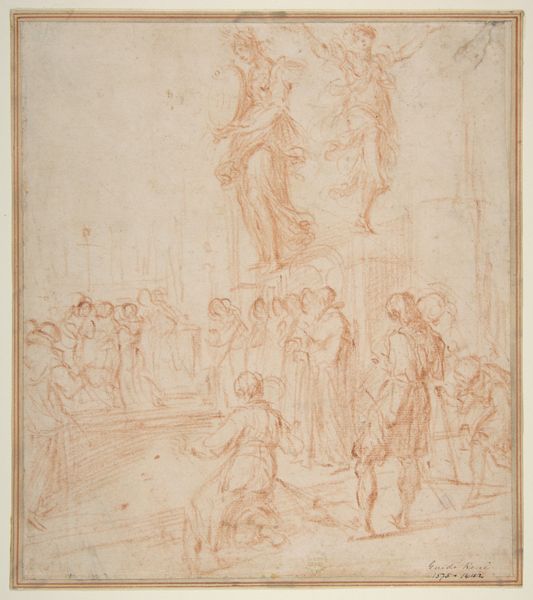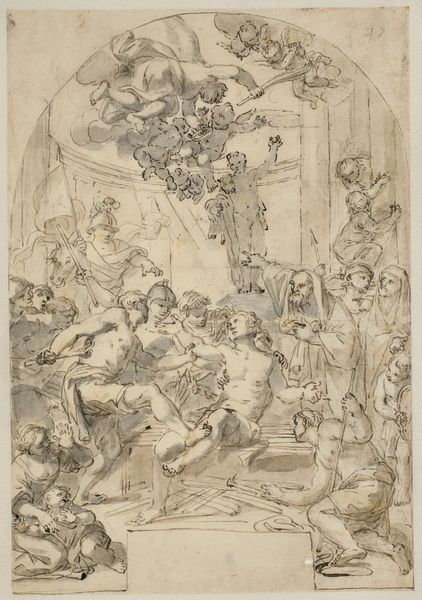
Mary Magdalen Converting the People of Marseilles c. late 17th century
0:00
0:00
drawing, ink
#
drawing
#
narrative-art
#
baroque
#
ink painting
#
etching
#
figuration
#
ink
#
history-painting
Dimensions: 7 11/16 x 5 1/4 in. (19.53 x 13.34 cm) (sheet)
Copyright: Public Domain
Curator: This late 17th-century drawing, "Mary Magdalen Converting the People of Marseilles," presents us with an interesting exercise in ink. Editor: There's a sense of urgency, I think, even in its unfinished quality. The frenetic energy almost vibrates off the page. Curator: Exactly! Note the dynamism achieved through simple materials: ink and paper. How do you think the quick, repetitive lines contribute to the narrative? Editor: I see a power dynamic visualized so well in the levels, the way figures are positioned above or kneeling before Mary Magdalen. The lines denote bodies in action—actively receiving the message or resisting it, perhaps. What more can you tell us about how this narrative plays out within the materials? Curator: The relative simplicity, the ready availability of ink as a medium at the time, is telling. It speaks to dissemination, a visual evangelism perhaps—accessible production meant to easily proliferate the saint's story to reach the largest audience possible. The repeated lines, in essence, become symbolic of reproduction itself. Editor: I hadn't considered that! The very act of creation, a near mass production as you suggest, mirroring the message of conversion, the literal production of believers... This certainly impacts how we think of art making in that period. Is it possible to explore what it means for this artwork to remain unfinished? Curator: The unfinished nature might speak to workshop practices—division of labor and such. Consider also the value historically placed on preparatory sketches, especially those circulated to teach others. A glimpse into artistic production reveals a good deal. Editor: Absolutely. Viewing it through this lens reshapes the piece from a depiction of historical religious event to the historical processes of creation and belief formation. It also reveals the human dynamics in converting and proselytizing, with layers of sociopolitical influence and how gender roles played out. Fascinating. Curator: Indeed. The drawing process itself embodies the transmission of an idea, much like the subject it depicts. Editor: What a reminder that artworks hold stories beyond their literal representations! I'll carry that perspective with me.
Comments
No comments
Be the first to comment and join the conversation on the ultimate creative platform.
